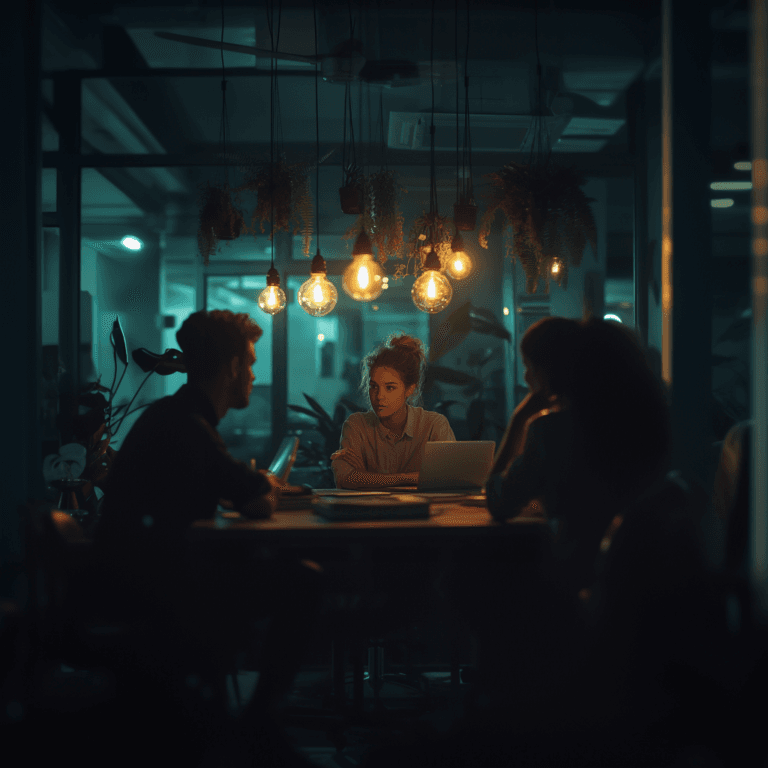In the latest episode of Creativity in the Era of AI, I sat down with Cisco Guzman, former Adobe director and a visionary in the creative industry, to explore the essence of human creativity in a world increasingly shaped by artificial intelligence. The conversation discussed thought-provoking questions: Is creativity uniquely human? Can AI replicate the drive, inspiration, and authenticity that define our creative process?
Cisco, known for his interdisciplinary thinking and deep understanding of human-centered design, shared his insights on how creativity is evolving, the challenges creative professionals face, and how tools like Pactto are reshaping the way we collaborate and communicate in creative workflows.
The Human Touch in Creativity
Cisco reflected on his journey as a creative professional, emphasizing that creativity is not just about making things, it’s about feeling. He described creativity as a state of freedom, integration, and connection to something greater than oneself. For Cisco, creativity is an emotional and spiritual experience where the head and heart align, creating a sense of purpose and connection to others.
He explained that even if AI could generate an entire commercial by itself, it wouldn’t stop him from creating because creativity is inside him. It’s about expressing yourself and connecting with others through art, poetry, or design. This perspective highlights the irreplaceable role of human emotion and authenticity in the creative process. While AI can enhance efficiency, it’s the human touch that brings depth, meaning, and connection to creative work.
The Role of AI in Creative Workflows
The conversation shifted to the practical impact of AI on creative workflows. Cisco shared how AI tools have transformed his process, allowing him to save time and focus on what truly matters. He recalled spending hours searching for stock images, only to have clients reject them. Now, with AI, he can generate his own images that communicate exactly what he needs. This shift isn’t just about speed—it’s about profitability and reclaiming time for the creative work he loves.
Cisco also highlighted how tools like Pactto are revolutionizing feedback and collaboration. Instead of typing out lengthy emails or struggling to convey emotions through text, creative professionals can now send video feedback with clear action items, ensuring nothing gets lost in translation. He emphasized that Pactto captures the emotion, excitement, and frustration that text simply can’t convey, making it a game-changer for creative teams.
The Future of Creativity: Alignment and Authenticity
Looking ahead, Cisco shared his vision for the future of creative teams. He believes that the tools of the future won’t just manage tasks—they’ll facilitate alignment and understanding. He envisions tools that aggregate inputs, provide actionable insights, and help teams move forward collectively. For Cisco, the future isn’t about list managers like Jira or Asana—it’s about communication tools that eliminate misunderstandings and streamline the creative process.
He also emphasized the importance of authenticity in creativity. As AI becomes more integrated into creative workflows, the ability to stay true to one’s unique voice and vision will be a key differentiator. Cisco believes that humans are irreplaceable because our way of thinking, our craft, and our ability to solve problems are what drive human evolution forward. AI can help us reclaim our time, but it’s up to us to shape how it’s used.
A Message to Creative Professionals
For those feeling uncertain about the rise of AI, Cisco offered a reassuring message. He acknowledged that skepticism is valid, especially given humanity’s mixed track record with technology. However, he encouraged creative professionals to stay in the game and shape the future of AI.
Cisco believes that designers and creative people are essential to human evolution. Without them, the world would be lost. He urged creatives to embrace AI as a tool that can make their lives more livable, giving them the work-life balance they’ve been missing. By leveraging AI, creative professionals can focus on what they do best: solving problems and creating meaningful work.
Final Thoughts
The conversation with Cisco Guzman was a powerful reminder that while AI is transforming the creative landscape, it’s the human element—our emotions, authenticity, and ability to connect—that will always define true creativity. Tools like Pactto are here to enhance that process, helping creative professionals communicate more effectively and focus on what they do best: creating.
As we move forward, the challenge will be to embrace AI as a partner, not a threat, and to continue shaping the future of creativity with intention and purpose.
